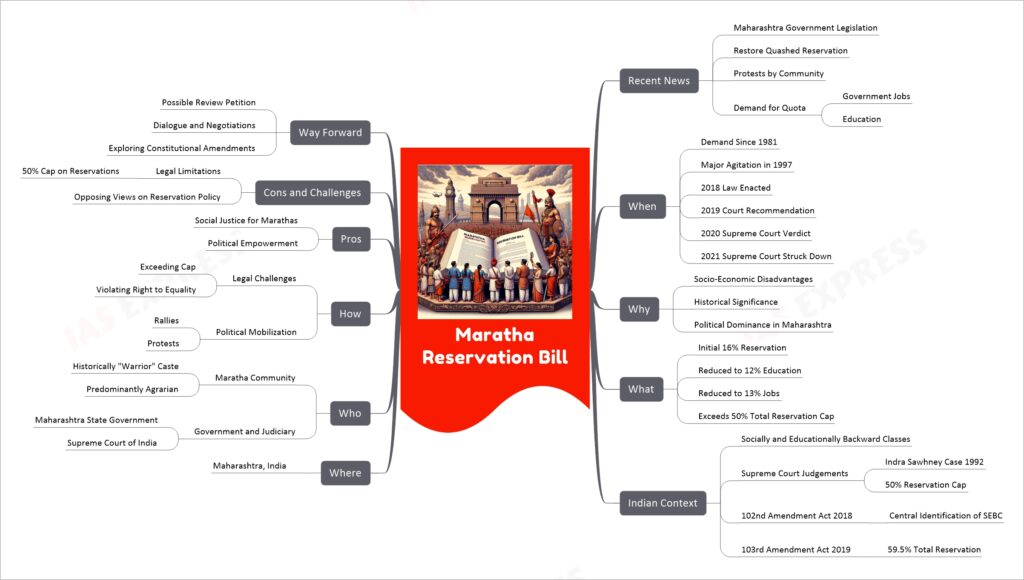Maratha Reservation Bill

The New Maratha Reservation Bill in Maharashtra, India, aims to address the socio-economic disadvantages faced by the Maratha community by providing them with reservations in government jobs and education. Historically dominant in the state’s political landscape, the Marathas have been advocating for reservation quotas since the 1980s. The issue gained momentum in 1997 and saw significant developments in 2018 when a 16% reservation was initially granted. However, this faced legal challenges, leading to a reduction in the reservation percentages and eventual striking down by the Supreme Court in 2021 due to exceeding the 50% total reservation cap set in the 1992 Indira Sawhney judgment.
The situation is further complicated by the 102nd and 103rd Constitutional Amendment Acts, which affect the state’s power to identify Socially and Educationally Backward Classes (SEBCs) and the overall reservation percentage in India. Despite these challenges, the demand for Maratha reservation continues, marked by protests and political mobilization, highlighting the ongoing struggle for social justice and political empowerment within the legal and constitutional framework of India.
If you like this post, please share your feedback in the comments section below so that we will upload more posts like this.

